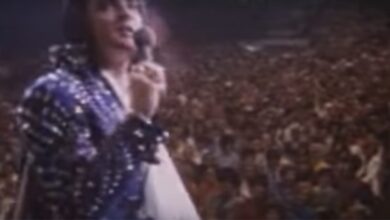Emotional Performance Of ‘He Stopped Loving Her Today’ By Dolly, Vince, And Keith
Dolly Parton, Vince Gill, and Keith Urban are luminaries within the country music scene, each contributing dramatically to its evolution and richness. Their collaborative version of “He Stopped Loving Her Today” serves not only as a celebration of George Jones’s legendary status but also as a powerful reminder of the interconnectivity and longevity that characterizes country music. Beginning their careers at different times, the trio embodies a diverse range of styles and influences, each bringing their own flavor to this iconic song. Parton, with her roots in traditional Appalachian music, layers the piece with her indelible warmth and depth. Vince Gill, often praised for his virtuosic guitar skills and smooth vocal harmonies, underscores the track with his refined musical expertise. Meanwhile, Keith Urban infuses a modern sensibility, reflecting the genre’s contemporary trends and expanding its reach.
The emotional depth of “He Stopped Loving Her Today” resonates universally due to its themes of love and loss, making it a poignant choice for this collaboration. Each artist’s interpretation adds richness to an already profound narrative. Dolly Parton’s voice, with its unique ability to convey vulnerability and strength, effectively captures the sorrow and longing embedded in the lyrics. Vince Gill’s harmonies act as an emotional anchor, shining particularly in the song’s climactic moments. Keith Urban’s guitar work, characterized by his inventive licks and intricate solos, enhances the overall production, drawing listeners into the song’s rich emotional landscape.
This reinterpretation serves multiple purposes. It’s not just a tribute to George Jones but also a declaration of the timeless nature of the song’s themes. As society changes, so do musical landscapes, and the collaboration of these three artists illustrates this evolution. Their way of melding their strengths makes the classic not only resonate with older generations familiar with George Jones but also invites younger audiences who may not know his work or the number. This intergenerational approach demonstrates the genre’s adaptability and highlights how country music retains its core values even amidst shifts in style and presentation.
The process of recording the song was likely fraught with nostalgia and reverence among the artists, as they reflected on their connections to George Jones and the significance of his work. Each performed with an awareness of the legacy they were continuing. Their shared passion for music supports a sense of community and collaboration that is often evident in country music, making the genre unique in its collaborative spirit. It allows artists not only to uplift each other but to also reinforce the messages embedded in the songs they choose to cover.
Fans have widely embraced this rendition, with many expressing appreciation for its emotional depth and authenticity. Social media platforms and streaming services have seen increased activity as listeners share their reactions, affirming the song’s impact. This contemporary version serves as a bridge—connecting the old with the new, inviting dialogue about country music’s past while showcasing its relevance today. Audiences excited by the new rendition can explore the original and appreciate its enduring qualities.
Looking beyond the song itself, the collaboration sheds light on the broader landscape of country music, demonstrating how established artists can uplift the genre’s newer voices. This melding of styles reflects an ongoing acknowledgment of country music’s roots while also acknowledging the innovators who have redefined and modernized its sound. It encourages newer artists to engage with traditional work, creating an essential conversation between past and present.
Dolly Parton’s and Vince Gill’s long careers have been marked by their ability to create powerful emotional connections with their audiences. Storytelling has always been at the heart of country music, and their artistry continues to celebrate that vital component. Keith Urban, too, fascinates audiences with his lyrical depth and musical creativity. Together, they craft a narrative that resonates beyond their individual achievements—essentially elevating the combined voices of this beloved genre.
As the music continues to develop, so does the interpretation of its most cherished works. The collaboration of these three artists exemplifies the strength found in unity. The heart of country music is its ability to tell stories that evoke deep feelings, and this rendition shows how the essence of a classic can be reinterpreted while remaining true to its core.
Ultimately, “Dolly, Vince, Keith: A Triumphant Version of ‘He Stopped Loving Her Today'” stands as a celebration of life, love, and loss while reinforcing the importance of honoring those who have paved the way in the genre. It becomes a multifaceted tribute not just to George Jones, but to the evolving tapestry of country music itself, affirming that while artists may change and styles may shift, the core of what makes music meaningful endures.
Through this collaboration, fans of all ages can be reminded of the emotional truths that country music captures. As they enjoy this new interpretation, they are invited to discover the roots of the song and celebrate the ongoing legacy of all artists willing to bridge the space between past influence and modern expression.





